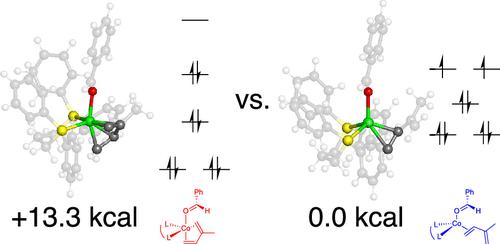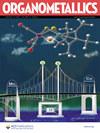Alternate Geometries in the Cobalt-Catalyzed Hydroacylation of Dienes Facilitate a High Spin Mechanism: A Density Functional Theory Study
IF 2.5
3区 化学
Q2 CHEMISTRY, INORGANIC & NUCLEAR
引用次数: 0
Abstract
In contrast to the more common rhodium-catalyzed hydroacylation reaction, which is widely accepted to proceed via a low-spin singlet mechanism that passes through the familiar steps of oxidative addition → alkene insertion → reductive elimination, the cobalt-catalyzed hydroacylation reaction of dienes reported by Dong et al. ( J. Am. Chem. Soc., 2014) has been calculated to proceed via a high-spin triplet mechanism. The initial minimum energy pathway evaluated was the singlet, as two prior studies had also examined that pathway. The use of nudged elastic band methods enabled location of additional intermediates relative to the previous studies but also revealed that the isomeric product distribution was not accurately reproduced and that at least one intermediate appeared to prefer a different geometry. Subsequent examination of the triplet minimum energy pathway showed the intermediates are accompanied by geometries not typically associated with the singlet mechanism, which facilitates a very different pathway that involves oxidative cyclization and a direct reductive hydrogen atom transfer, thus avoiding the metal-hydride intermediates and reductive elimination steps that characterize the singlet pathway entirely.

钴催化的二烯烃加氢反应中的替代几何结构促进了高自旋机制:密度泛函理论研究
人们普遍认为铑催化的加氢酰化反应是通过低自旋单重子机理进行的,该机理经过氧化加成→烯插入→还原消除等熟悉的步骤,与此不同的是,Dong 等人报道的钴催化的二烯烃加氢酰化反应(《美国化学学会杂志》,2014 年)经计算是通过高自旋三重子机理进行的。最初评估的最小能量途径是单重子,因为之前的两项研究也考察了该途径。与之前的研究相比,使用裸弹带方法可以找到更多的中间产物,但同时也发现异构产物的分布没有得到准确再现,而且至少有一种中间产物似乎更喜欢不同的几何形状。随后对三重最小能量途径的研究表明,中间产物的几何形状与单重机制通常并不相关,这就促成了一种非常不同的途径,其中涉及氧化环化和直接还原氢原子转移,从而完全避免了单重途径中的金属酸酐中间产物和还原消除步骤。
本文章由计算机程序翻译,如有差异,请以英文原文为准。
求助全文
约1分钟内获得全文
求助全文
来源期刊

Organometallics
化学-无机化学与核化学
CiteScore
5.60
自引率
7.10%
发文量
382
审稿时长
1.7 months
期刊介绍:
Organometallics is the flagship journal of organometallic chemistry and records progress in one of the most active fields of science, bridging organic and inorganic chemistry. The journal publishes Articles, Communications, Reviews, and Tutorials (instructional overviews) that depict research on the synthesis, structure, bonding, chemical reactivity, and reaction mechanisms for a variety of applications, including catalyst design and catalytic processes; main-group, transition-metal, and lanthanide and actinide metal chemistry; synthetic aspects of polymer science and materials science; and bioorganometallic chemistry.
 求助内容:
求助内容: 应助结果提醒方式:
应助结果提醒方式:


